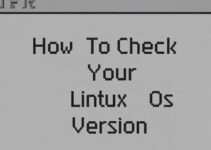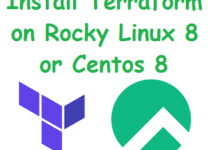When it comes to managing software packages in Linux, there are several tools available, each with its own set of features and capabilities. Two such tools that are commonly used are YUM and RPM. YUM and RPM are both package management systems that are used to install, update, and remove software packages in Linux-based operating systems. In this article, we will explore the difference between YUM and RPM and their usage.
Difference Between YUM and RPM
What is RPM?
RPM (Red Hat Package Manager) is a package management system that is used in Red Hat-based Linux distributions like Fedora, CentOS, and Red Hat Enterprise Linux. It was first introduced in 1997 by Red Hat and is still widely used in many Linux distributions today.
RPM is a command-line tool that is used to install, update, and remove software packages in Linux-based operating systems. RPM packages contain software programs and libraries, as well as information about the dependencies required to run those programs. The package contains a file with the extension .rpm, which can be installed using the rpm command.
Some of the key features of RPM include:
- Dependency resolution: RPM can automatically resolve dependencies required by a package during installation or update.
- Rollback support: RPM allows users to rollback to a previous version of a package if needed.
- Verification: RPM can verify the integrity of a package to ensure that it has not been tampered with.
- Scripting support: RPM allows users to run scripts during package installation or removal.
- Source code management: RPM can be used to build and manage source code packages.
What is YUM?
YUM (Yellowdog Updater Modified) is a package management system that is used in Red Hat-based Linux distributions like Fedora, CentOS, and Red Hat Enterprise Linux. It was first introduced in 2003 by Duke University and is still widely used in many Linux distributions today.
YUM is a command-line tool that is used to manage software packages in Linux-based operating systems. YUM is a front-end to the RPM package manager and provides a user-friendly interface for managing software packages. YUM uses a repository-based system, where software packages are downloaded from remote repositories and installed on the local system.
Some of the key features of YUM include:
- Dependency resolution: YUM can automatically resolve dependencies required by a package during installation or update.
- Rollback support: YUM allows users to rollback to a previous version of a package if needed.
- Automatic updates: YUM can automatically update packages to their latest available version.
- Plugin support: YUM allows users to extend its functionality using plugins.
- Repository management: YUM can be used to manage remote repositories and configure their settings.
RPM vs YUM
Now that we have a basic understanding of RPM and YUM, let’s take a look at the key differences between the two:
1. Command Line Interface:
One of the key differences between RPM and YUM is their command-line interface. RPM is a command-line tool that requires users to use specific commands to manage packages. YUM, on the other hand, provides a user-friendly interface that makes it easier to manage packages. YUM commands are easier to remember and use compared to RPM commands.
For example, to install a package using RPM, you would use the following command:
rpm -ivh package.rpm
To install a package using YUM, you would use the following command:
yum install package
As you can see, the YUM command is much simpler and easier to remember compared to the RPM command.
2. Dependency Resolution:
Both RPM and YUM can automatically resolve dependencies required by a package during installation or update. However, YUM provides better dependency resolution compared to RPM. YUM can resolve dependencies across multiple repositories, while RPM can only resolve dependencies within the same package. This means that YUM can find and install all the required dependencies for a package, even if they are not available in the same repository.
3. Repository Management:
YUM is a repository-based system, where software packages are downloaded from remote repositories and installed on the local system. YUM can be used to manage remote repositories and configure their settings, making it easier to manage software packages. RPM, on the other hand, does not have built-in support for managing repositories. RPM packages must be manually downloaded and installed on the local system.
4. Automatic Updates:
YUM can automatically update packages to their latest available version, while RPM requires users to manually download and install updates. This makes YUM more convenient for users who want to keep their system up-to-date without having to constantly check for updates.
5. Plugin Support:
YUM allows users to extend its functionality using plugins. There are a variety of YUM plugins available that provide additional features and capabilities, such as caching, bandwidth limiting, and package signing. RPM does not have built-in support for plugins, which limits its functionality compared to YUM.
Examples of Using RPM and YUM:
Let’s look at some examples of how to use RPM and YUM to install and manage software packages on a Linux system.
Using RPM:
To install a package using RPM, you would use the following command:
rpm -ivh package.rpm
For example, to install the Apache web server using RPM, you would download the Apache package from a official site and run the following command:
rpm -ivh httpd.rpm
To update a package using RPM, you would use the following command:
rpm -Uvh package.rpm
For example, to update the Apache web server using RPM, you would download the updated package from a repository and run the following command:
rpm -Uvh httpd.rpm
To remove a package using RPM, you would use the following command:
rpm -e package
For example, to remove the Apache web server using RPM, you would run the following command:
rpm -e httpd
Using YUM:
To install a package using YUM, you would use the following command:
yum install package
For example, to install the Apache web server using YUM, you would run the following command:
yum install httpd
To update a package using YUM, you would use the following command:
yum update package
For example, to update the Apache web server using YUM, you would run the following command:
yum update httpd
To remove a package using YUM, you would use the following command:
yum remove package
For example, to remove the Apache web server using YUM, you would run the following command:
yum remove httpd
As you can see, the YUM commands are much simpler and easier to remember compared to the RPM commands. Additionally, YUM provides better dependency resolution and automatic updates, making it a more convenient and user-friendly way to manage software packages.
Conclusion:
Both YUM and RPM are package management systems that are commonly used in Linux-based operating systems. RPM is a command-line tool that is used to install, update, and remove software packages in Red Hat-based Linux distributions. YUM is a front-end to RPM that provides a user-friendly interface for managing software packages.
The key differences between RPM and YUM include their command-line interface, dependency resolution, repository management, automatic updates, and plugin support. While RPM is a powerful tool for managing software packages, YUM provides a more user-friendly and convenient way to manage packages, especially for users who are new to Linux. Ultimately, the choice between RPM and YUM depends on the user’s preference and the specific requirements of their system. If you prefer using the command line and have specific needs for package management, RPM may be the better choice. However, if you prefer a more user-friendly and convenient way to manage packages, YUM may be the better choice.









